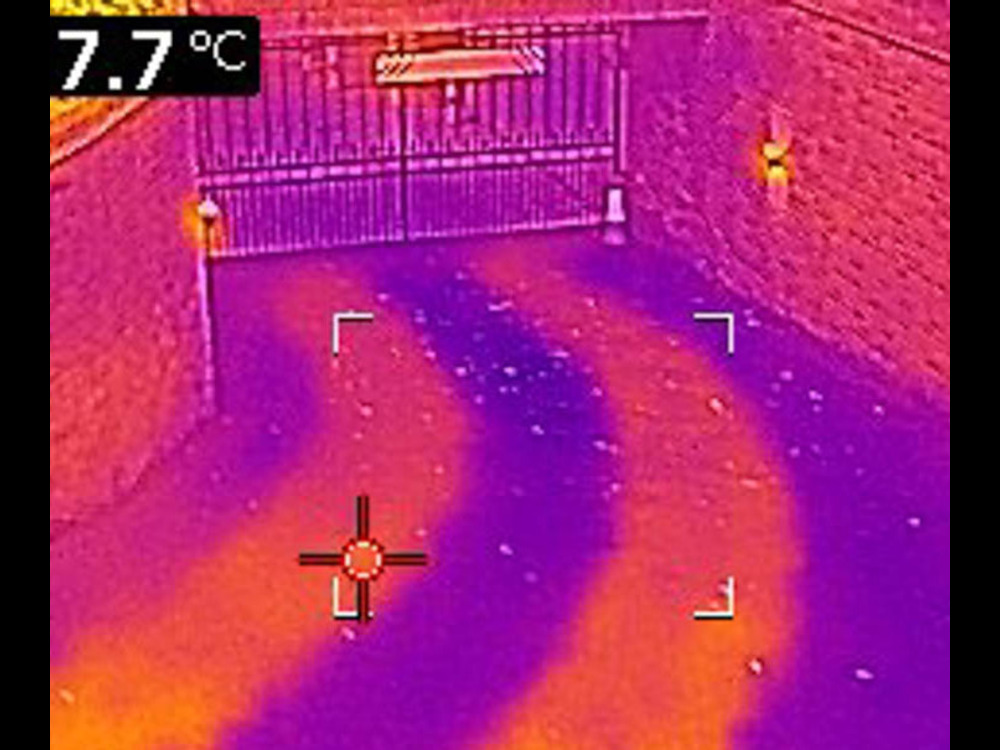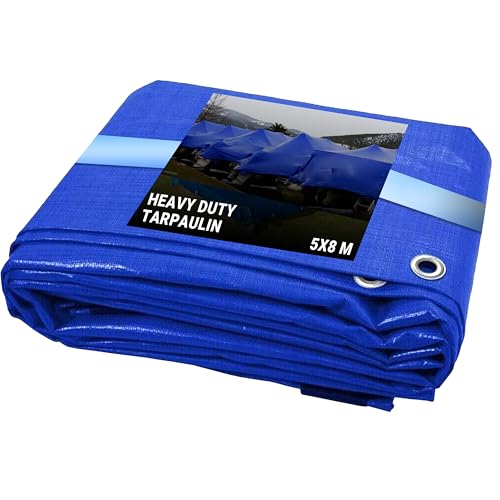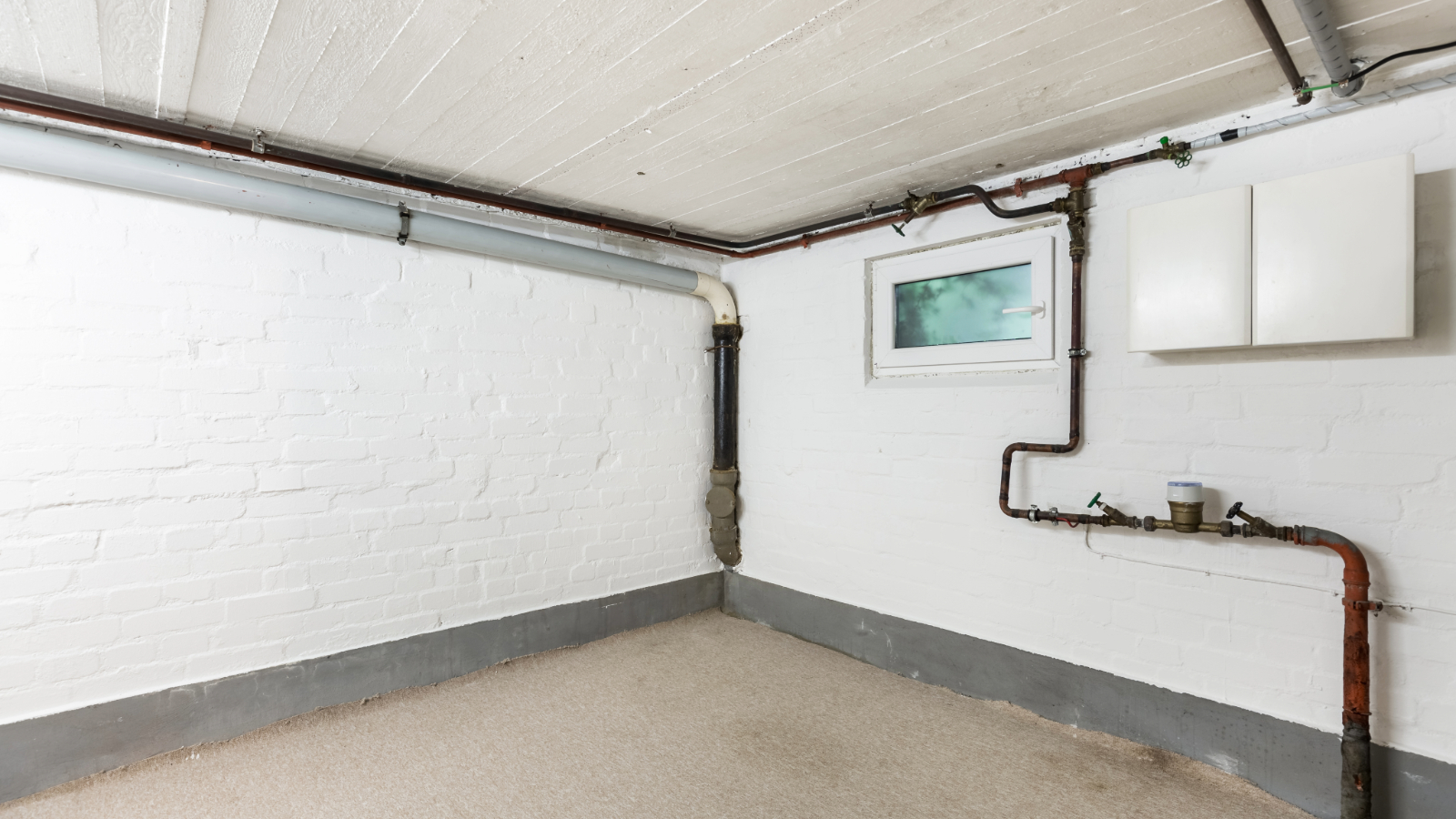
A heated driveway might sound frivolous, but growing numbers of Brits are catching on to this internationally established driveway idea.
It works like underfloor heating, with a system of electric mats (or less commonly, water pipes) delivering heat to the driveway surface. The purpose is to melt snow and ice, ensuring the driveway remains passable and grippy for vehicles and pedestrians during bad weather.
You’ll probably have some questions about heated driveways: how are they installed, where are they necessary, and can they be justified from an environmental standpoint? To bring some clarity, we interviewed a leading heated driveway installer and a property expert, whose advice will feature throughout this guide.

Robin Edwards is a property buying expert at Curetons, a property buying agency specialising in high-end residential properties. The Curetons team has significant experience with viewing and buying properties with heated driveways.
Why are Brits installing heated driveways?
By melting snow and ice, a heated driveway system makes your driveway design safer and more functional. That’s a key benefit for households in colder or wetter places, such as the Scottish Highlands, Pennines or North Wales, and also for homes in other parts of the country where the driveway is north-facing and surrounded by tall structures.
Some households will be happy to keep using established methods of snow and ice removal, such as shovelling and spreading de-icing salts. However, a heated driveway is clearly the lower-effort method.
“Heated driveways appeal most to buyers who value convenience and safety, particularly older homeowners or those with larger properties where ice and snow clearance is physically demanding,” says Robin Edwards, a property buying agent at Curetons.
“These driveways are often seen as a logical extension of other smart home features, such as underfloor heating and remote-controlled gates, and they’re a practical addition for properties on sloped plots or rural roads that aren’t routinely gritted,” he adds.
Bring your dream home to life with expert advice, how to guides and design inspiration. Sign up for our newsletter and get two free tickets to a Homebuilding & Renovating Show near you.


Heated Driveway Systems is one of the UK’s leading providers of heated driveway technology, based in Lincoln and installing heated driveway systems nationwide. Before founding the company in 2018, owner Bo Nielsen accumulated decades of experience as a builder, underfloor heating installer and heat mat distributor.
The images featured in this article have been kindly provided by Bo Nielsen and Heated Driveway Systems. They all show the company's own systems.
Types of heated driveway systems
Most heated driveways are equipped with an electric radiant system. Comprising a network of wiring and mats, these systems deliver electric heating precisely when it is needed.
“Almost all of the systems we fit and supply are fully automatic, with two ground sensors and an air temperature sensor,” explains Bo Nielsen, owner of Heated Driveway Systems.
“When the temperature falls below 3°C and moisture is detected, the sensors trigger heating so that snow and ice melts.”
Another type of driveway heating based on underground water pipes – known as a hydronic system – is commonly used in North America, but not in the UK.
"Hydronic is very expensive, and pretty much every installer here and in Scandinavia uses electric radiant heating,” says Nielsen. “One exception is that football grounds often use a hydronic system, because these can be run at a lower temperature to protect the grass.”
Are heated driveways bad for the environment?
Heating a driveway is a great modern driveway idea but clearly requires the use of energy – usually mains electricity. This is sure to generate carbon emissions, although there are ways to keep usage relatively low.
“You’re looking at 50-100 hours annual running time in the South of England or the Midlands, and a system generally runs at 300W per square metre of heated area,” says Nielsen.
“If you’re worried about the energy use, you can reduce it by installing a system that heats only 60-70cm tracks for your car.”
Another way to reduce the emissions from powering a heated driveway system would be to use a domestic renewable energy source.
“Generally a heated driveway system is powered by a 240V household electricity supply, but it’s also possible to use solar panels with batteries,” Nielsen notes.
Of course, the most environmentally friendly way to clear a driveway is to shovel it yourself – if you have the time and capability to do so.
De-icing salts are potentially more problematic, as some types can cause ecological harm or gradual damage to the driveway surface. Meanwhile, hiring a snow plowing service generates varying levels of emissions depending on factors including the equipment used and how far the provider travels to reach your property.

The heated driveway installation process
1. Planning
It’s extremely unlikely that you’ll install your own heated driveway system. So, the installation process starts with choosing an installer and planning the project. The heated driveway trade doesn’t have a trade body such as HETAS or FENSA, so you’ll need to choose a provider based on reputation.
The installer will visit your property to survey the site and identify where the heating system can be installed and connected. They’ll talk you through options such as the area of the heating system – particularly whether it will cover the whole driveway or be laid as tracks just wide enough to clear a path for your car.
You'll also need to identify the contractors and electrician who will collaborate with the heated driveway installer.
2. Subsurface preparation
A team of contractors will now need to prepare the subsurface upon which the heated driveway system will be installed. Different subsurface materials are used for different systems. In Nielsen’s case, tarmac is usually the preferred option. The subsurface must lie at the ideal height to accommodate the heating system and surface that will go on top.
It’s possible that other groundworks will be required at this stage, such as adding improved driveway drainage to divert melting snow and ice.
3. System installation
Again, this part of the process will vary depending on the type of heated driveway system. For Nielsen and other installers of electric radiant systems, it’s typical for the system to be prepared off-site, then delivered to the property and rolled out over the subsurface. A control unit is installed indoors. These electric systems can then be connected to the mains (or an alternative power source) by an electrical engineer.
Hydronic systems, which are rare in the UK, have a basically equivalent installation process but require the involvement of plumbing and heating engineers.
Upon completion of installation (and before the driveway surface is laid), initial tests should be done to ensure the system works perfectly.
4. Paving over the system
The heated driveway system can now be paved over, completing the installation.
Various surface materials can be used for this purpose, including concrete and paving slabs. Nielsen recommends a 50mm layer of tarmac. It’s always best to check with your chosen heated driveway provider to ensure their system is compatible with your preferred surface material.
Once the surface has been laid by the responsible contractors, your heated driveway should be ready to use after final tests and activation via the control unit.
Products to shift snow
Heated driveway costs
In itself, a heated driveway system is priced comparably to other heating systems such as a heat pump or domestic underfloor heating.
“Most of my systems are in the £4-7,000 bracket, although smaller systems cost less than £4,000,” says Nielsen.
“A 12m long driveway with 1m wide tracks and an area of 30m² works out at about £6,000 plus VAT. That’s the cost of installation; then you need an electrician to wire up the system to the power source and a construction company to lay the surface tarmac.”
The added costs of electrical work and especially surfacing will be significantly higher than the cost of the heating system itself. As such, the best time to install a driveway heating system is whenever you next have your driveway resurfaced.
Powering a heated driveway can be less expensive than some homeowners might expect.
“A system that costs £6,000 up front can be powered for about £5.40 per hour, which can be affordable for many homes, especially on developments with a shared driveway,” says Nielsen.
One of the financial upsides to a heated driveway is that the feature might make the property more saleable.
“It’s a detail that can create a strong first impression; the driveway is after all one of the first things people see and it conveys that the home has been built or upgraded with thoughtful, high-spec touches,” says Edwards.
“From a selling perspective, the benefits are easy to explain: no need to grit or shovel snow, improved safety underfoot and for vehicles, and protection for driveway surfaces that might otherwise be damaged by frost or de-icing chemicals.”
FAQs
How is a heated driveway maintained?
“As with any integrated home system, the main concern around heated driveway systems is long-term maintenance,” says Edwards.
“Heated driveways, especially hydronic systems (those using heated water pipes), require expert installation. If there’s a fault beneath the surface, rectifying it can be difficult and costly.
“From a development or renovation standpoint, the presence of a heated driveway could complicate future groundwork, and for that reason it’s important to keep detailed plans and make sure the installation is future-proofed with access points.”
Nielsen recommends (and installs) electric radiant heating systems rather than hydronic systems, partly based on the lower risks involved in their operation.
“You don’t want to be digging up the finished driveway to fix a leaking pipe,” he says.
All heated driveway system maintenance is a job for the professionals, so don't make a driveway mistake by attempting anything without guidance. If you have concerns about the functioning of your heated driveway or its control unit, speak to the installer.
Installing a heated driveway system is undoubtedly a sure way to make a driveway safer and easier to use during winter, but it's not the only option for households with a generous budget. You might also consider a rotating driveway, which will make manoeuvring easier and perhaps safer in all weather. Or, if grandeur is the goal, a driveway soakaway might be the right driveway feature for you.
Pete Wise is a freelance writer and keen DIYer from Leeds. Pete's tool reviews have featured in titles including Homebuilding & Renovating, Ideal Home and The Independent. He also writes features and news articles for publications such as The Guardian, BBC Good Food and T3. When he isn't busy writing, Pete can often be found at libraries, pubs and live music venues. He finds tile-cutting strangely zen.




